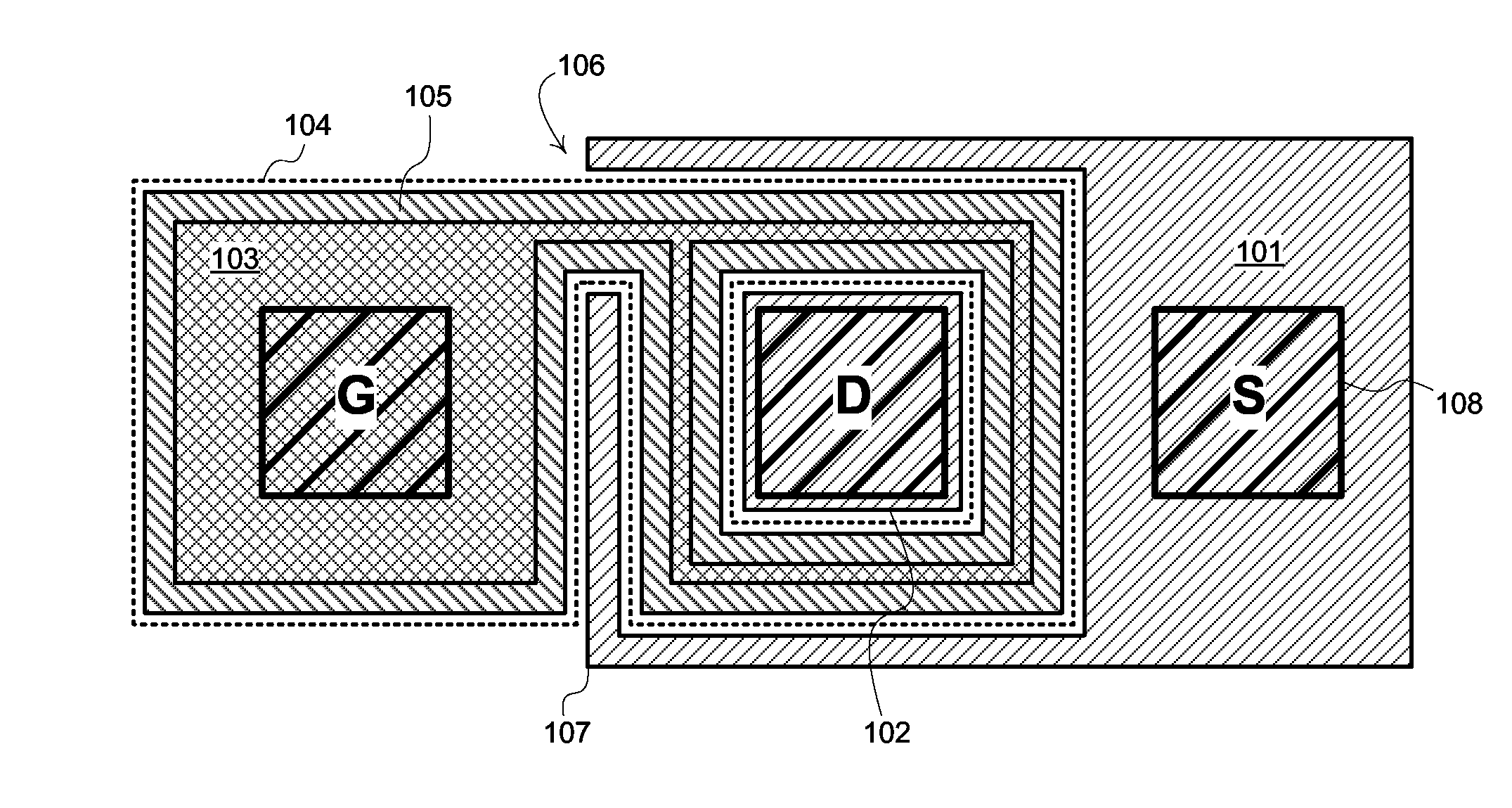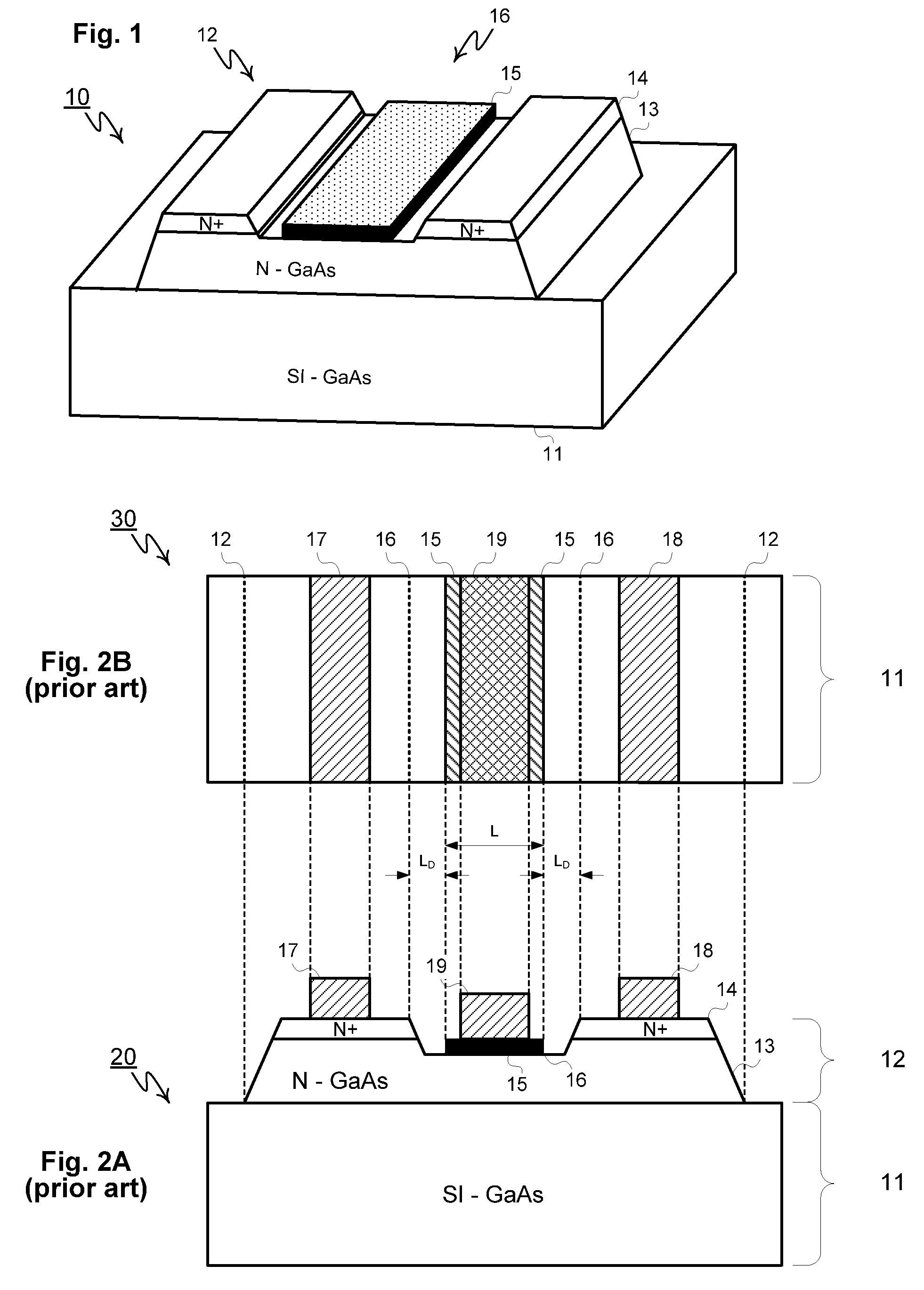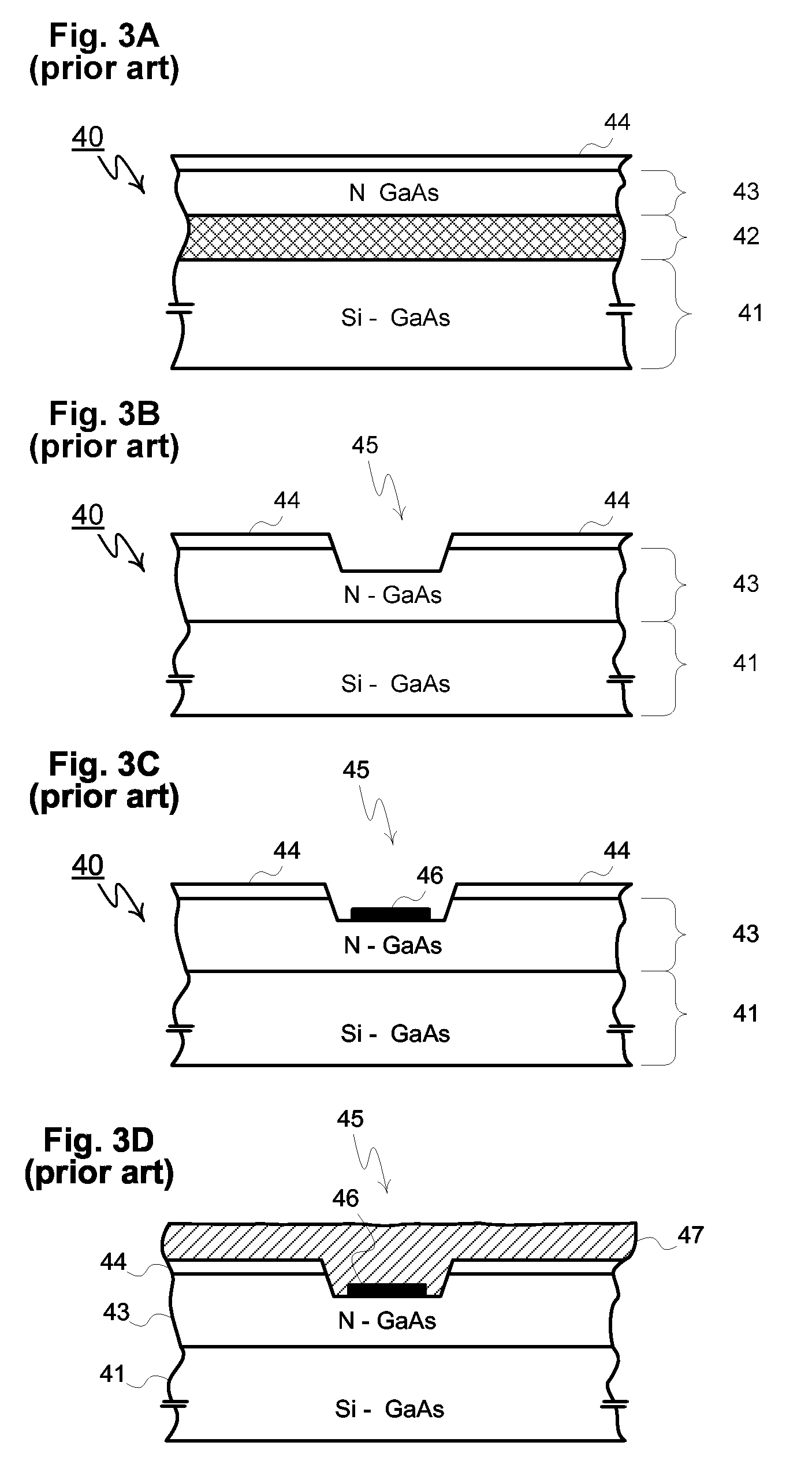Rugged MESFET for Power Applications
a technology of power applications and mesfet, which is applied in the direction of electrical apparatus, semiconductor/solid-state device manufacturing, and semiconductor devices. it can solve the problems of inefficient and unreliable operation of power mosfets, and is virtually useless at such low-voltage, so as to reduce the risk of schottky barrier, reduce the risk of mesfet gate leakage and impact ionization, and reduce the effect of electric field
- Summary
- Abstract
- Description
- Claims
- Application Information
AI Technical Summary
Benefits of technology
Problems solved by technology
Method used
Image
Examples
Embodiment Construction
[0062] Adapting MESFETs for efficient, robust, and reliable operation in switching power supplies requires innovations and inventive matter regarding both their fabrication and their use. These innovations are described in the related applications previously identified. The design and fabrication of power MESFETs for robust operation and rugged avalanche characteristics, especially for use in switching converters, requires inventive matter, which is the main subject of this invention disclosure.
[0063] Specifically, to improve the ruggedness and avalanche capability of a power MESFET, three issues must be addressed in its design and fabrication. The intrinsic weaknesses in present day MESFETs include edge breakdown effects, surface breakdown effects, and lack of a low-impedance voltage clamp in the unipolar MESFET structure itself. Remedies for each of these issues may be applied individually, or in combination, to improve the avalanche ruggedness and robustness of a MESFET to a lev...
PUM
 Login to View More
Login to View More Abstract
Description
Claims
Application Information
 Login to View More
Login to View More - R&D
- Intellectual Property
- Life Sciences
- Materials
- Tech Scout
- Unparalleled Data Quality
- Higher Quality Content
- 60% Fewer Hallucinations
Browse by: Latest US Patents, China's latest patents, Technical Efficacy Thesaurus, Application Domain, Technology Topic, Popular Technical Reports.
© 2025 PatSnap. All rights reserved.Legal|Privacy policy|Modern Slavery Act Transparency Statement|Sitemap|About US| Contact US: help@patsnap.com



